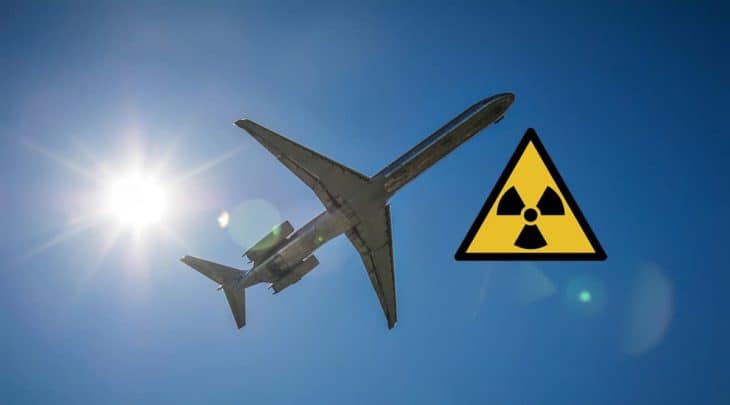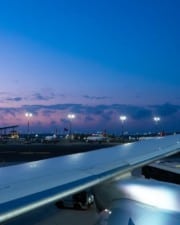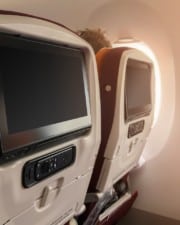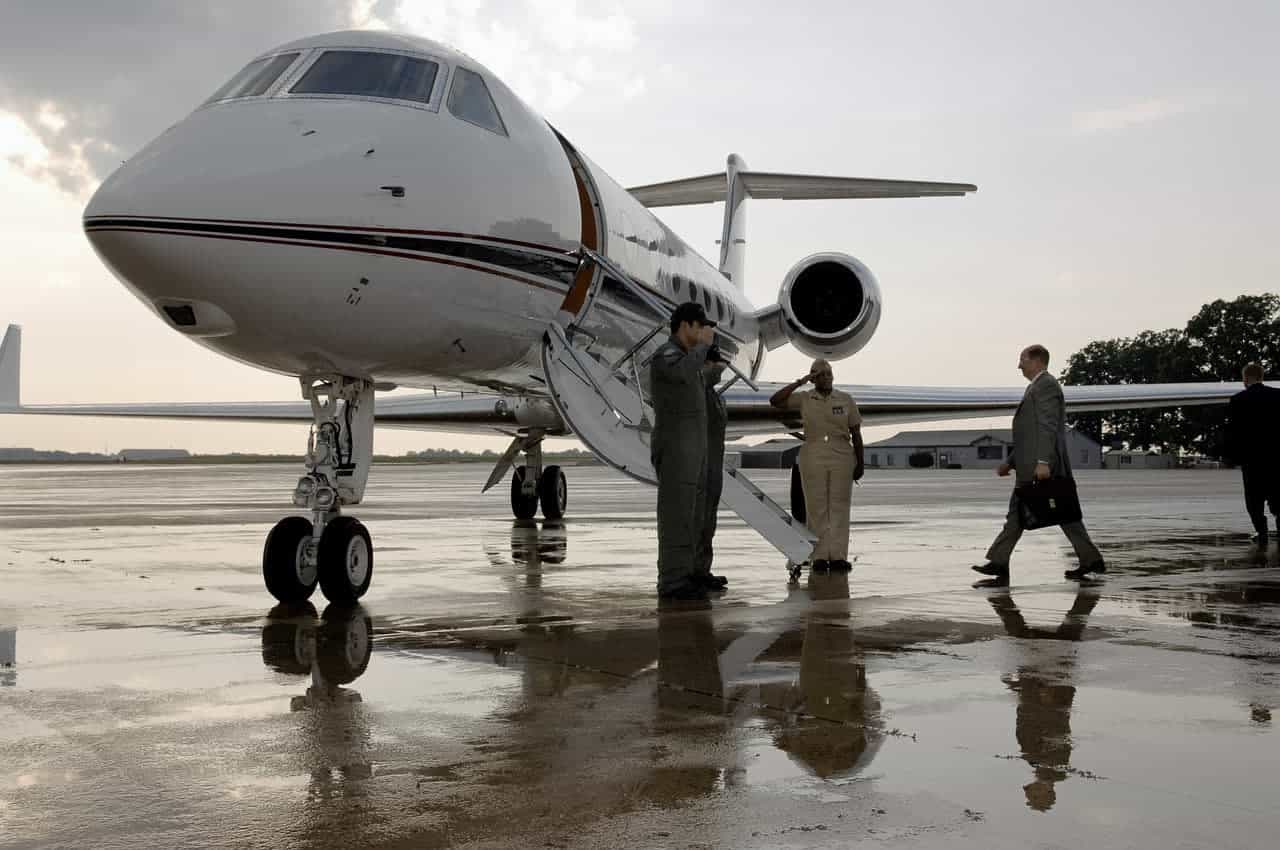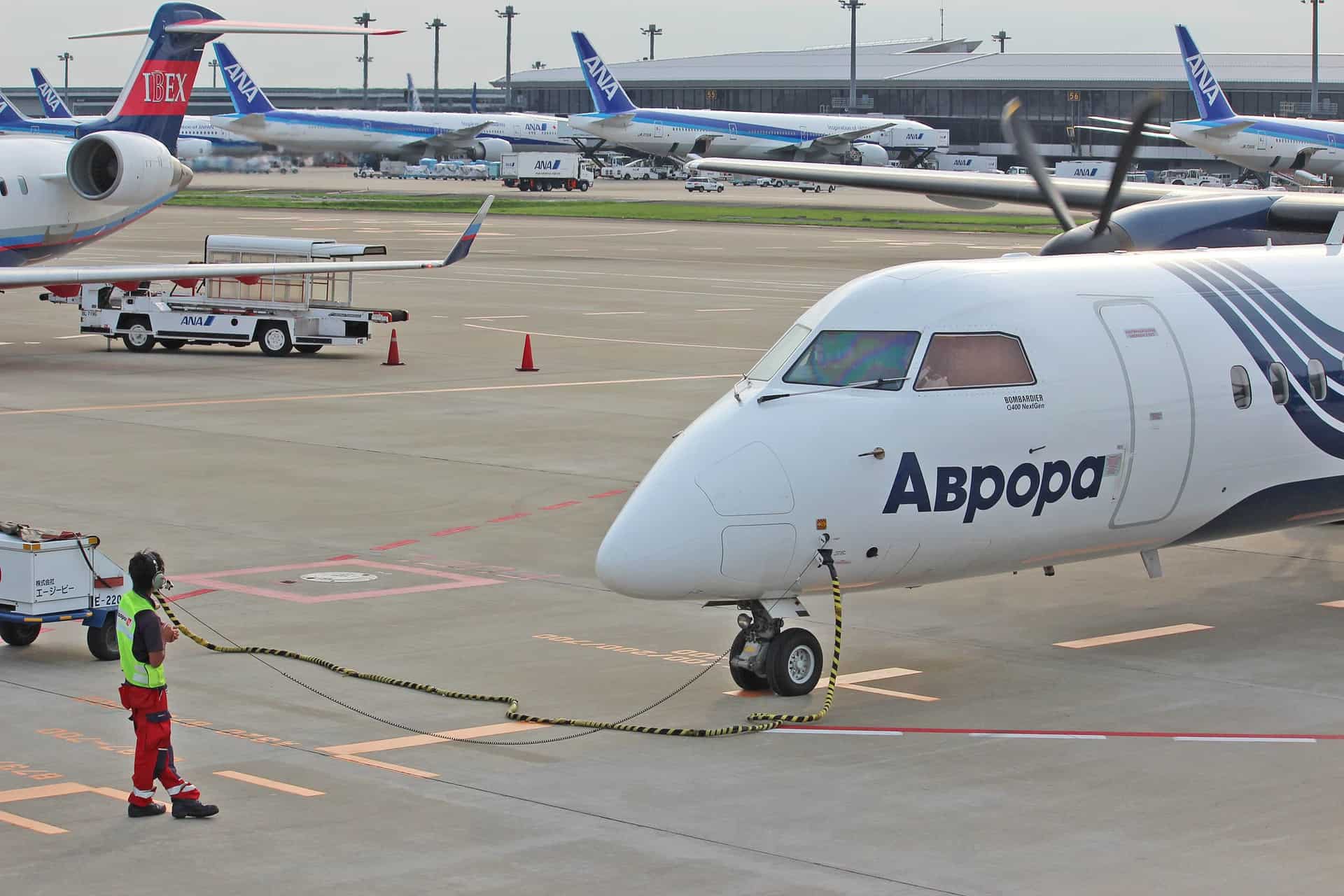Flights can already be stressful enough for passengers who have to worry about getting to their gate on time and suffering through stuffy cabins on long turbulent flights – do we really have to add radiation to our list of airborne worries? And if so, how can we protect ourselves from radiation while flying?
Table of Contents
Is Air Travel Bad For Your Health?
The short answer is that unless passengers practically live up there, then probably not. The longer answer is that while radiation does take place in the air, the amounts of radiation are small and typically mild enough that passengers would need an extremely high degree of exposure to suffer problems.
Cosmic Rays and Airborne Radiation
Before we get into the effects of this radiation, consider for a moment – where does all that radiation come from? While it may be natural to suspect that it comes from the X-rays at airport security checkpoints or due to some mechanisms onboard, the real culprit is quite different.
Cosmic rays are the greatest source of airborne radiation. These are experienced by astronauts when they leave Earth’s atmosphere, but it is not necessary to enter orbit to feel their effects.
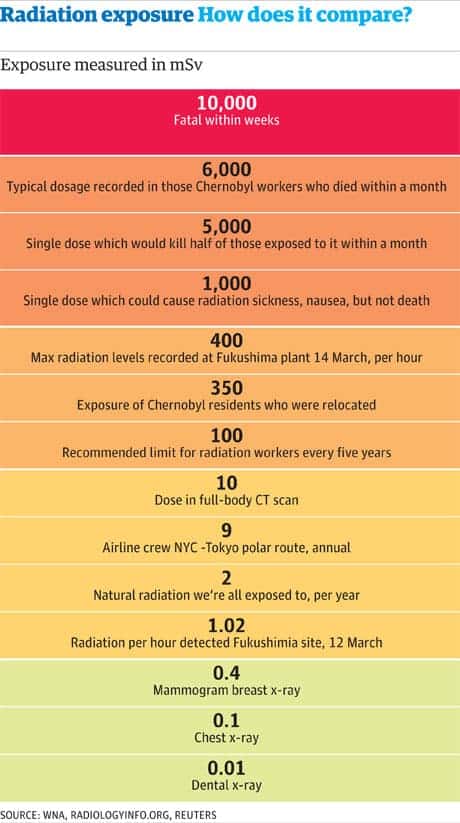
While our atmosphere catches most of these rays and protects us from them, the altitude at which flights take place bring passengers closer to them.
On the one hand, the degree of exposure is still quite small, especially compared to that experienced by astronauts. On the other hand, it is nevertheless exposure, which means that every time a person flies, they are being exposed to radiation.
Of course, radiation itself is hardly particular to flights. We live with radiation coming from everything from microwaves to smartphones, and very few of us suffer significant consequences from these things (so far, at least).
That is because it isn’t simply enough to be exposed to radiation. The exposure typically needs to be prolonged enough or to a great enough amount of radiation for it to “count.”
So, do airplanes have radiation? Yes, but not enough to really do much harm.
With few exceptions, neither of the above points are typically true for our exposure to radiation. The flights we take are not close enough to the cosmic rays nor are they long enough for the very limited amount that do get through to cause great concern.
Airplane radiation vs X-ray.
To put things into perspective, the amount of radiation you experience as a result of radiation while on an airplane is less than what you would experience from a chest X-ray.
Does The Duration of Flight Matter?
Does the duration of a flight affect how much radiation you are exposed to? Once again, the answer is yes, but with the caveat that it really doesn’t matter very much, given the extremely small amount of radiation involved.
The longer your flight, the longer your exposure to cosmic radiation. The same goes for altitude – the higher you fly, technically speaking, the greater your risk of exposure.
That said, the exposure itself is extremely negligible. To put a number on it, we experience 0.33 mSv in terms of radiation just from regular life on Earth.
That number goes up the more time you spend in the air and the higher you fly, but it’s a matter of multiplying an already-low variable by relatively low variables themselves.

Take one of the most extreme cases, that of Tom Stuker, a man who holds the record for having logged the most time in the air with roughly 3.7 years’ worth of estimated total flight time.
Even with that much time in the air, the risk is only 0.003 mSv per hour at 30,000 feet. We have about a 25% chance of contracting some form of fatal cancer, and a case like Stuker’s only raises his probability to 25.5%.
It is a slight increase, yes, but not enough to lose sleep over – and it isn’t as though most of us spend the equivalent of slightly less than a Presidential term in the air.
While the amount you fly will affect your overall exposure, you would have to practically live in the air or otherwise forego our atmospheric protection the way astronauts do for this risk to be elevated enough to be of great consequence.
Does Flying At Night Reduce Radiation?
That said, it isn’t as though the risk factor is entirely nonexistent, so let’s continue to humor some of the theoreticals and variables at play here.
If flights during the day put one at risk of cosmic radiation, does flying at night reduce radiation?
Some people hate the combination of jet lag, time changes, and overall fatigue that can come with red eye flights – but if they can protect one from cosmic rays, maybe they’re worth it?
Passengers won’t be getting off that easy.
Again, cosmic rays are, well, cosmic. They come from space. It really does not matter whether it is sunny outside or not, because as long as the sun and other stars in our solar system give off radiation, it will find its way down to our atmosphere, where they’re absorbed.
Airplane Radiation, Pregnancy, and Risk
For however rewarding it may be in the end, being pregnant is one of the most difficult experiences imaginable. For one thing, it’s a “full-time job” like nothing else. For another, pregnant women have to deal with all kinds of fun and lifestyle restrictions and burdens.
They have to give up wine, caffeine, and any number of activities – must we really add flights to that list? In doctor’s offices, there are warnings against women being exposed to the radiation emitted by X-rays, so does the same kind of cautionary tone follow here?
Is there a plausible airplane radiation pregnancy risk factor?
Thankfully, while flights can be burdensome on pregnant women for a host of other reasons, radiation isn’t a likely culprit.
As stated, the radiation to which we are exposed when flying on a commercial airliner at 30,000 feet is even less than that aforementioned X-ray machine that pregnant mothers are told to avoid.
The average risk for birth defects in the United States is 3%, and 15% for a miscarriage. There is no evidence to suggest that this number changes in any significant way as a result of the cosmic radiation one is exposed to during flights.
With that in mind, let’s continue to ponder some of the hypotheticals.
What about larger vs. smaller planes, for example? Technically speaking, the latter would theoretically be safer since they tend to fly at lower altitudes, and thus further away from the cosmic radiation, albeit incredibly marginally so.
What about lead aprons, as one would wear when going into an X-ray machine?
Once again, the amount of radiation you are receiving here is infinitesimal, and less than what you would receive from an X-ray. A lead apron is not necessary.
What about something more serious, such as the potential for flight attendants to miscarry?
While there is some anecdotal evidence relating to miscarriages and flight attendants, there is no evidence linking this to cosmic radiation or any radiation linked to air travel. Tragic as they are, every miscarriage is different.

Stress may be a common through line, given how prevalent it is in flight attendants’ field of work, but scientifically speaking, there is no evidence to suggest any link between the amount of radiation one receives in the air and miscarriages, birth defects, or any other birth- or pregnancy-related anomalies.
When it comes to our children, we can all be overprotective, which is understandable and natural.
That said, it should be understood that there is no evidence of any noticeable risk to women who are pregnant or may become pregnant.
Airplane Radiation and Babies
And what about once you’ve given birth – do new parents have to give up flying while they have a baby along for the ride?
Here again, the answer is largely no, though it comes with a bigger asterisk than the other categories.
While infants are more at risk of radiation exposure, and so the risk is technically higher, chances are that parents won’t be spending enough time in the air for it to come anywhere close enough to matter.
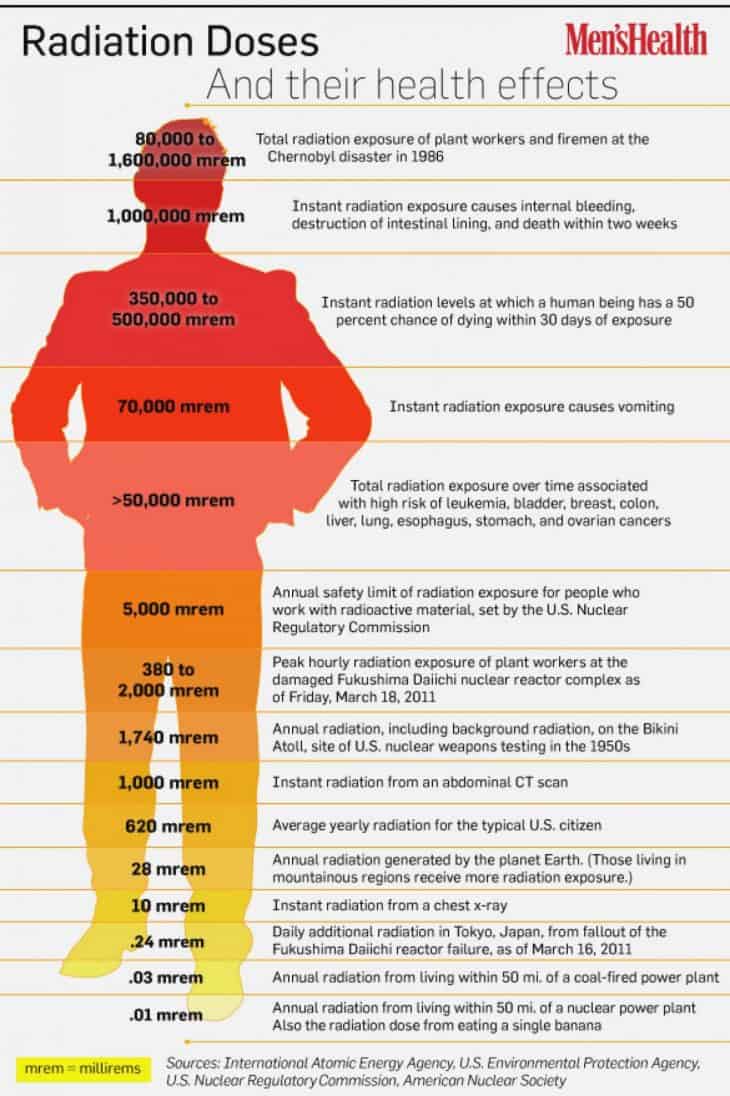
For example, say you are planning a couple long plane trips or a few shorter ones totaling about 15 hours of flight time around 30,000 feet.
That computes to an exposure of about 0.075 mSv. Once again, we experience 0.33 mSv just by existing on Earth.
While it the risk is technically higher, therefore, this is only in the most technical, theoretical sense. When it comes to airplane radiation, babies are essentially safe, as there is no evidence of plausible risk for infants flying in terms of exposure to radiation.
Altitude and Radiation Risk
We have already touched on this a bit, but what about altitude? Is there a tangible difference in the risk factor depending on how high you fly?
Here again, the answer is no. After all, if altitude were a major risk factor for conditions such as cancer which result from radiation, people could hardly live in the Andes, Alps, or Rocky Mountains.
Distance doesn’t matter much, either. The UK government estimates a Transatlantic flight radiation dose at 0.08 mSv – less than a CT scan (1.4 mSv) or the average annual radiation exposure of citizens in the UK (2.7 mSv) and US (6.2 mSv.)
The same holds true for planes. While it is technically true, as stated above, that a plane flying lower has a theoretical possibility of receiving less radiation, the amount is so tiny as to be practically negligible.
References ▾
- https://www.cdc.gov/nceh/radiation/air_travel.html
- http://theconversation.com/air-travel-exposes-you-to-radiation-how-much-health-risk-comes-with-it-78790
- https://spaceweatherarchive.com/2015/10/27/flying-at-night-doesnt-protect-you-from-cosmic-rays
- https://hps.org/publicinformation/ate/faqs/pregnancyandflying.html
- https://hps.org/publicinformation/ate/q9770.html
- https://www.gov.uk/government/publications/ionising-radiation-dose-comparisons/ionising-radiation-dose-comparisons
Related Posts
